Howl For Wildlife - HOWL CAST
Howl For Wildlife podcast dives into the current issues surrounding wildlife management, hunting and fishing. Our goal is to provide you with up to date information on legislative issues that pose a threat to wildlife, our heritage and conservation. Howl For Wildlife podcast will also provide you with the resources to get involved and how to effectively make your voice heard. We will also discuss current conservation efforts and have conversations with those who lead from the front.
Episodes
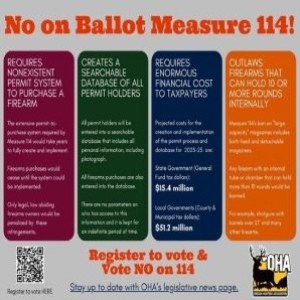
Thursday Oct 13, 2022
Oregon is facing the most restrictive gun laws in the nation. Measure 114.
Thursday Oct 13, 2022
Thursday Oct 13, 2022
Join Amy Patrick of Oregon Hunters Association and David Maccar of Black Rifle Coffee Company & Free Range American as we discuss this pressing issue. At the very least Measure 114 would put an end to buying new firearms almost immediately simply because there is no process in place to adhere to this law should it pass. Conservation dollars are at risk. Privacy is at risk. 2A is at risk. Hunting is at risk. This is a ballot box issue that needs attention now!!
Learn more about measure 114 and why sportsmen oppose it here: https://sportsmenno114.org/
Follow:
Oregon Hunters Association IG | FB
Free Range American IG | FB
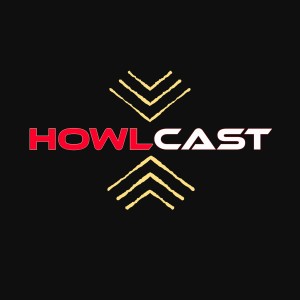
Monday Jul 25, 2022
Arkansas bear collaring project
Monday Jul 25, 2022
Monday Jul 25, 2022
Charles Whitwam and John Stallone Sit down with the Arkansas bear collaring team to discuss why, when, and how of this project
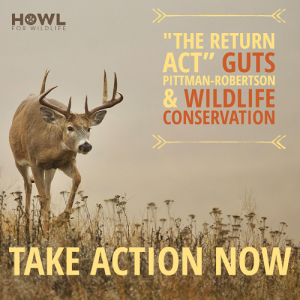
Monday Jul 18, 2022
The “Return Act” GUTS Wildlife Conservation and Hunting
Monday Jul 18, 2022
Monday Jul 18, 2022
The “Return Act” GUTS Wildlife Conservation and Hunting
Initially I wanted to write a very sophisticated and technical account of the situation. However, I have decided to give you a layman’s view of the bill and the implications. Rep. Andrew Clyde (R-Ga.) has introduced H.R. 8167 a bill that would ultimately be the tumbling pebble that initiated the collapse of the hunting industry. This is a bold and polarizing statement, but unfortunately very true. This bill aims to remove Pittman Robertson (PR) Excise tax from the sale of firearms, ammo and sporting equipment. Don’t know what PR is or does? Simply put, PR is an 11% excise tax to the manufacturers of firearms, ammunition, and archery equipment . The proceeds of the funding is distributed to state governments for wildlife restoration projects, public shooting ranges, hunter education programs and R3 programs.
How will this destroy hunting?
Anti-wildlife: Removing a key component of wildlife conservation funding will ultimately result in less sustainable populations of wild animals, both game and non-game species. Less game, means less opportunity, less opportunity means less participation, less participation means less funding, and less funding means even more loss of wildlife. The all mighty dollar is always the number one contributing factor on policy creation, especially when it’s on a resource that is determined by perceived value. Deer have value to people who want to see them on the landscape, but how much are they willing to pay to see them there? Deer also have value to those who want to hunt them and consume them. Historically hunters are willing to pay much more 20-30x more than wildlife viewers for animals to be on the landscape. Removing, funding just shrinks the hunters voice and adds more road blocks for sound management practices which ultimately will end up hurting wildlife.
Removes a piece of our armor: One of the most relatable arguments we have as stakeholders in wildlife management and hunting legislation is the funding we bring to the conservation table. It has been very hard for special interest groups and anti-hunting groups to out voice us because we have been protected by the shield of conservation funding. Although PR funds are just a portion of the funding provided by hunters, it is still a very substantial component to wildlife management funding and without question fortifies our right to have a say in what happens in wildlife management. Plus as in the aforementioned example #1, the alternate funding streams would begin to follow suit in a domino effect further stifling the voice of the hunter.
Pitman Robertson protects Hunting: PR funds work on a fund matching base. Many states do not have laws that protect funding from license and tag sales from being used by the state for other projects. The way PR works – To help ensure states use the money for wildlife conservation, habitat , shooting facilities, hunter Ed and R3 programs, each state will receive (roughly) $3 for every $1 they generate for these programs. This is an incentive for state fish and game agencies to keep and use as much of their license sales and even create other revenue streams IE: raffles and auctions etc. to receive more funding from PR. If this mechanism is lost, it is very likely that much of the funding brought in by license and tag sales would be pillaged by the state for projects unrelated to wildlife conservation. I don’t have to state what that would do to our wildlife and hunting opportunity.
Cutting off their noses to spite their face!
This bill is likely a political stunt to retaliate to the absurd 1000% tax law introduced by Rep. Don Beyer of Virginia and many of the other anti-gun laws surfacing in the current political climate. Many Republicans have supported this bill touting their 2A membership cards and rallying the “troops” not realizing that pushing this bill forward would be detrimental to the gun industry. According to “American gun facts” 81 million Americans own guns, there are 15-17 million hunters in the US alone so roughly 20% of gun owners are hunters. In order to make an example of anti-gun policy supporters of this bill are willing to punish 20% of their constituency. What happens when hunters can’t hunt anymore and don’t have a need for their firearms or more ammo?
The fertilizer that cultivates 2A: What the supporters of this bill fail to recognize is that PR funds are a main driver for the cultivation of shooting sports. A portion of PR funds are ear marked for public shooting facilities, and youth programs. This not only brings new gun owners into the community but it gives gun owners a place to exercise their right of gun ownership. PR funding is directly tied to the hunting community and hunting conservation, the manufactures of firearms and ammunition recognize and support it because they know that hunting provides an avenue to again exercise the right to owning a firearm. Without these avenues those guns become pieces of furniture in one’s home. What good is a gun in my safe that I can’t go use anywhere?
Stop the tyranny “I intend to stop the Left’s tyranny in its tracks by eliminating the federal excise tax on firearms and ammunition” Rep. Andrew Clyde (R-Ga.) The Pittman Robertson act was initiated by sportsmen and women and more importantly the gun and ammo manufactures to ensure wildlife and the hunting heritage go on for perpetuity. It wasn’t introduced by some leftist tyrant looking to punish gun owners. By undoing this legacy Act those who support it are becoming what they claim to be fighting against. To representative Clyde’s point, his goal to prevent taxing people out of their rights is without question important. However, this bill is not the answer in fact it may have the reverse affect. Without low cost public ranges gun owners would be forced to use private ranges, which cost more. As demand for these facilities go up the cost will increase. Moreover, if hunting goes away or becomes privatize like in other countries, gun manufactures would be losing a large portion of the hunting community as consumers. Causing revenue to go down which ultimately if you have any concept of economics, will cause the price of firearms and ammo to rise. So who is pricing the “average Joe” out of their 2A rights?
Blood in the water: The very same groups that this bill boasts to oppose are the biggest benefactors. Anti-hunting groups have recognized the opportunity to jump on board with this bill knowing the damage it would do to the hunter. What happens when you have 2A advocates and anti-hunting groups fighting for the same thing? You guessed it! The demise of hunting as we know it.
The price won’t change: After speaking with two manufactures of ammunitions and firearms both indicated that pricing to the consumer would likely not be affected. When you purchase a firearm for a $100 at the gun store you do not pay $111 plus sales tax for this firearm you pay $100 plus sales tax. The excise tax was paid for by the manufacture. Yes the cost was passed along to you the consumer because it was built into the cost of the gun. Us gun owners have been paying this additional cost since 1937 it is not a tax we see or even perceive. Based on my interview with the two different manufactures if the tax goes away the cost of guns and ammo mostly like won’t come down 11% you are still going to be paying the same price you have always paid. So who wins here? Guess who loses? Wildlife, hunters and every gun owner in America.
To Rep Clyde's credit his bill does try to provide an alternate funding mechanism for PR through oil and mineral programs, but at an almost 50% discount to the current level of funding, which is bad enough by itself. His proposed solution also stipulates the funding would go to "those of greatest need", which means elk, turkey, deer, antelope and most animals whom are doing well will not be directly benefitted from this new allocation. Plus, Clyde is basing this funding on an industry that is constantly under fire and depending on who is sitting in the White House dictates the amount of funds generated. Furthermore, this is not the only program that is earmarked to be funded by this industry, in fact it would be last in line.
Many have dismissed this bill as something that doesn’t have any political traction and that “It won’t go anywhere”. I have seen other seemingly preposterous bills be taking lightly and the sportsman have suffered because of it. There are 50+ sponsors of this bill, do not take it lightly...... It’s is my opinion that we the hunting and fishing community need to stomp it out so fiercely and send a message so loud that this is not an option and never to mess with wildlife or our hunting heritage. In conclusion nothing good can come out of this bill it doesn’t teach the Tyrants they can’t mess with our rights, It will do irreparable damage to wildlife, it won’t save anyone money, it gives anti-hunters more power, it will be the demise of hunting and ultimately it will eliminate a large portion of gun owners in America which is precisely the converse of the 2A topic.
TO TAKE ACTION CLICK HERE
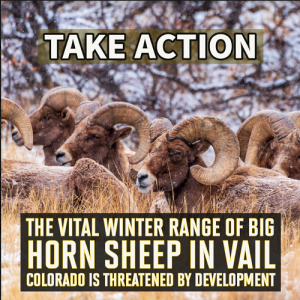
Monday Jul 11, 2022
Janis Putelis & Trey Milhoan on Vail Bighorn sheep
Monday Jul 11, 2022
Monday Jul 11, 2022
A herd of bighorn sheep could soon lose access to its historic winter range if a controversial housing development is allowed to go through in the town of Vail, Colorado.
The high density housing complex that’s threatening these Colorado big horns is being proposed by Vail Resorts—a multinational corporation that owns and operates 40 resorts in the U.S., Australia, and Canada.
Vail Resorts is hoping to build multiple structures in the middle of critical sheep habitat to house its growing workforce. That would amount to a total of 61 residential units on a parcel that the company owns known as Booth Heights. This plot sits between I-70 and the Gore Range, and it has served as critical winter grazing ground for the native Gore Range bighorns for as long as most Vail residents can remember.
The corporation says that this housing project is vital to its long term goals and has ignored pleas from Vail community members and the Vail Town Council to build the development on a different parcel that won’t threaten critical wild sheep habitat.
Habitat loss and fragmentation of bighorn sheep herds pose significant threats to this already imperiled species, and Vail Resorts’ plan to build on this historic sheep winter range would directly contribute to that troubling trend by forever displacing Vail’s beloved bighorns.
After completing a thorough on-the-ground study of the proposed development site, the Colorado Department of Parks and Wildlife’s own biologists advised Vail Resorts against moving forward with this project. They say, in no uncertain terms, that “the impacts to this already struggling sheep herd as a result of this development might not be able to be mitigated.” Translation: the habitat will be lost and the sheep will be gone.
As previously mentioned, Vail Resorts has chosen to disregard these grave caveats as well the groundswell of local opposition that has emerged within the Vail community.
Vail Resorts has been given multiple generous alternatives by the Town of Vail to move their development to another location (free of charge) and the ski company has denied all of those offers.
Additionally, Vail Resorts boldly claims to have a “Net Zero impact on the environment and habitat”. These empty claims are proving to be nothing more than greenwashing, and a ploy to attract investors.
Please help the Town of Vail and the continued existence of this iconic wild sheep herd by taking action on behalf of bighorns below.
By taking action below you'll be sending your message to Vail Resort's Executives. Over 30 messages varying in content and length have been pre-loaded for your use and display a different message each time you return. You can fully edit and send your own, add on to these messages or use what has been provided.
Please Join The Vail Big Horn Initiative To Get More Involved & Support
Big Horn Sheep Initiative : Web | IG | FB
TAKE ACTION
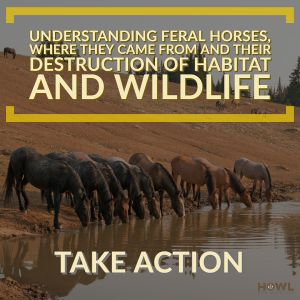
Tuesday Jul 05, 2022
FERAL HORSES in AZ an ongoing dilemma with Johnathan Fusaro
Tuesday Jul 05, 2022
Tuesday Jul 05, 2022
FERAL HORSES in AZ an ongoing dilemma with Johnatan Fusaro
WHY ARE THE ARIZONA SPORTSMEN FOR WILDLIFE CONSERVATION, THE CENTER FOR BIOLOGICAL DIVERSITY AND 32 SPORTSMEN ORGANIZATIONS REQUESTING THE HUMANE REMOVAL OF FERAL HORSES?
In 2011, The Wallow fire consumed vast portions of the Apache National Forest. It also destroyed parts of the White Mountain Apache Tribal lands (WMAT). With the fire, the boundary fences between the WMAT and the Apache National Forest were destroyed. During the next 11 years, horses from the WMAT came over to the Apache National Forest and migrated to the portions of the riparian areas that are home to the New Mexico Meadow Jumping Mouse and a recovery area for the Apache trout.
The photos that have been provided were taken by Dr. Robin Silver from the Center For Biological Diversity during 2019 and 2021. He documented that over 80% of the tracks and droppings were from horses. While horse advocates may try to claim that the horses were there for centuries, the truth is that they have migrated from tribal lands since the Wallow fire to the forest and need to be removed.
During extensive studies for the Wild Horse and Burro act in 1971 and 1973, there was no evidence of wild / feral horses on the Apache National Forest. The feral horses are growing in numbers each year and the head count exceeds over 400 animals. The habitat degradation that they have caused is severe and removal is the only means of rebuilding these areas for all wildlife.
READ THE FOREST SERVICE STATEMENTS HERE
READ FAQ's HERE
GROUPS IN SUPPORT OF THE HUMANE REMOVAL OF FERAL HORSES:The Arizona Sportsmen For Wildlife Conservation, The Center For Biological Diversity, Arizona Wildlife Federation, Anglers United, AZ Antelope Foundation, AZ Bass Nation, AZ Big Game Super Raffle, AZ Chapter of Backcountry Hunters & Anglers, AZ Chapter of Safari Club International, AZ Council of Trout Unlimited, AZ Deer Association, AZ Desert Bighorn Sheep Society, AZ Elk Society, AZ Flycasters Club, AZ Houndsmen's Association, AZ Outdoor Adventures, AZ Outdoor Sports, AZ Predator Callers, AZ State Chapter of National Wild Turkey Federation, Ben Avery Clay Busters, Christian Hunters of America, Diablo Trust, Maricopa Audubon Society, Mogollon Sporting Association, Mule Deer Foundation, No Excuse Hunting and Outdoors, Outdoor Experience 4 All, Southern AZ Quail Forever, Southwest Wildlife Foundation, SRT Outdoors, The Bass Federation of AZ. Theodore Roosevelt Conservation Partnership, Valley of the Sun Quail Forever, Yuma Valley Rod and Gun Club.

Monday Jun 27, 2022
Is Az Deer herd struggling? with Terry Herndon
Monday Jun 27, 2022
Monday Jun 27, 2022
Terry gives us a run down of the current situation in AZ with its declining deer herd.
We talk about the current outlook
Some things we should be focused on
And ways to get involved
Terry Herndon of the Arizona Mule deer Organization
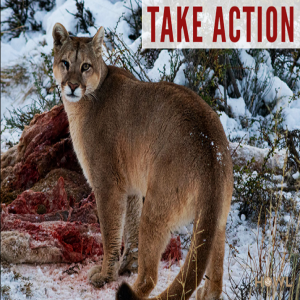
Tuesday Jun 21, 2022
Emergency Episode ! Blue Mtn Elk herd needs your help
Tuesday Jun 21, 2022
Tuesday Jun 21, 2022
We have Bart George on with us to discuss his lion research and the current situation we are facing in Washington. Want to get involved click here or speak at the meeting click here
Content from: Northwest Sportsman | Author: Andy Walgamott
WDFW is taking public comment over the next five weeks on a proposal to allow hunters to take a second mountain lion “in the areas where monitoring has shown a high level of cougar predation on elk calves in the Blue Mountain Elk herd.”
A COUGAR PEERS OUT OF A TREE IN NORTHEAST WASHINGTON. (WDFW)
GPS monitoring of young elk that began last spring show that just nine of 125 made it through this past never-ending winter, with 77 of their deaths attributed to predation, mostly by mountain lions.
The capture-collar effort will be repeated this spring, but it has also sparked calls from hunters and local officials to do something about the problem now.
Under WDFW’s proposal, hunters would be able to tag two of the big cats in what are known as Population Management Units 9, 10 and 11, which encompass Game Management Units 145, 149, 154, 162, 163, 166, 169, 172, 175, 178, 181 and 186.
(WDFW)
That’s also the range of the Blue Mountains elk herd, which is classified as “at risk” under a recent population assessment because it has dropped so far below its management objective of 5,500 animals.
The decline began following the killer winter of 2016-17, but despite reduced permits for antlerless cows – the reproductive engine of the herd – numbers are not bouncing back as would be expected, and WDFW is pinning that on cougars, which accounted for 54 of the 77 dead calves. Bears, wolves, coyotes and even bobcats took down the rest.
This year’s aerial survey found 3,600 elk on the range and only 17 calves per 100 cows, well below levels needed to stabilize let alone rebuild this hard-bitten herd.
“This proposed rule is in response to a recent WDFW monitoring effort that showed higher than expected calf mortality attributed to cougar predation in the Blue Mountains,” said Anis Aoude, WDFW Game Division manager, in a press release. “We are seeking your feedback on this proposed rule change.”
The agency “anticipates a corresponding increase in juvenile elk survival” if the increase is adopted and hunters harvest more cougars, but notes that it does not actually change the season structure in the Blues, where cats can be pursued during the September 1-December 31 general hunt and then from January 1-April 30 under a harvest management guideline that sets out a range of animals that can be taken.
In Population Management Unit 9, the northeastern Blue Mountains and foothills, that number is seven to nine cougars; in PMU 10, the range’s western side, that’s six or seven; and in PMU 11, its rugged southeastern face, it’s five or six. The ranges correspond to 12 to 16 percent of the cougar population.
Only one of the three PMUs – 10 – met the quota before the end of this year’s winter season.
Essentially, the proposal would allow the best cougar hunters to take a second one. A second transport tag would be required. (this is important to understand. The real issue is there are no effective or efficient methods of take available, such as hunting with hounds, and the mountain lion quota as it stands today is not high enough to be effective for proper balance & management of Washington's wildlife).
Comment is being taken through June 25. You can do so via this link to WDFW’s input page, via email or snail mail to: WDFW Wildlife Program, PO Box 43200, Olympia, WA 98504-3200.
The Fish and Wildlife Commission will also hold a public hearing on the proposal at its June 23-25 meeting, and is scheduled to make a final decision July 15.
What the commission does will be interesting.
The citizen panel that oversees WDFW policy has been increasingly loath to address predation, voting twice in the last six months to kill the limited-entry spring black bear hunt for 2022, which with its 158 tags in the Blues could have at least helped disrupt bruin predation on elk neonates during May’s birth pulse.
Last December a former and current member also suggested controversially the solution would be just to lower the elk herd objective and reduce hunting opportunities more.
By taking action below you'll be sending one of over 30 pre-drafted emails/comments to WDFW surrounding this subject. Of course you can edit these emails to reflect if you are a resident that would be affected by this bill, or your own personal experience, etc... Please be respectful.

Monday Jun 20, 2022
National outlook on deer herds in the US Kip Adams
Monday Jun 20, 2022
Monday Jun 20, 2022
In this episode we catch up with Kip Adams of Nation Deer Association
Kip and I discuss the over deer herd health of North America.
Kip breaks down CWD and EHD common deer diseases that are affecting deer herds.
Some of the things we can do to mitigate spreading these diseases
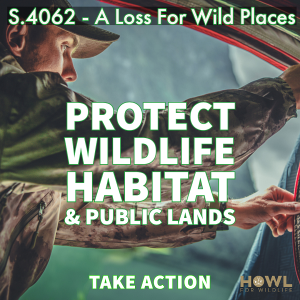
Friday Jun 17, 2022
Action Center review 1
Friday Jun 17, 2022
Friday Jun 17, 2022
Once a month we will be diving into the current issues we sportsmen are facing.
This month we break down:
Bears in North Carolina
Land use restrictions in NJ
Federal land grab in the west
Lead ammo ban in NY
and we touch on the elk and lion problem we are having in Washington
Howl For Wildlife - Action Center Review
Title:Action Center Review 1
Show Notes:
One of our bill researchers and content writers, Travis Halls, joins me for our Action Center Review. He has hands-on experience with some of the bills we’re working on in our action center. Bill season is typically January through April, but it’s mid-June and there’s still a lot going on. Travis gives us a rundown on the expansion of bear hunting in the western part of North Carolina. The commission decided that since the population is expanding, they opened up more areas, even in what were known as “sanctuaries” and off-limits. This ruffled some feathers within animal rights groups.
We then get into Utah’s “Houses Act”, which was introduced to the Senate in April. The bill was put forth to propose to take some federally managed land and free it up for purchase from state and local municipalities. It would make the land affordable, which would then sell to developers for housing. If the bill goes through, it will pose a risk for wildlife habitation. This isn’t just a Utah thing, and it’s happening in other areas.
Speaking of land use issues, in New Jersey, there’s a bill currently in the NJ house that takes an existing buffer zone from 150 yards from a residential area to 400 yards. It also requires private landowners to inform adjacent landowners of their intent to hunt. Before you can start hunting, you’d have to receive some sort of acknowledgement from your neighbors. We talk about how this kind of rule impacts the hunting community.
Another current topic is the lead ammo ban in New York State. While banning lead bullets seems like a good idea, it can discourage people from hunting. Lead is a lot cheaper than ammo like copper. Travis and I close out with a discussion on what’s going on in Washington with elk and lion.
What’s Inside:
Expansion of bear hunting in North Carolina and challenges.
The proposed Utah Houses Act and long-term implications for wildlife.
New Jersey land restriction rules.
Lead ammo ban in New York.
Elk and lion problem in Washington.
Mentioned in this episode:
Howl For Wildlife
Short Description:.
Travis Hall is a bill researcher and content writer and together, we go through our current Action Center Review. It’s mid-June and there’s still so much happening in terms of bills. Travis and I go through several topics, including the expansion of bear hunting in NC, the federal land grab in the west, land use restrictions in NJ, and the lead ammo ban in NY.
Tags:
Bills, land restrictions, bear hunting, lead ammo, land use, federal land, deer hunting, hunting community, howl for wildlife,
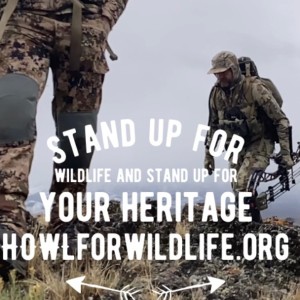
Saturday May 21, 2022
What’s Wrong with SB856 Charles Whitwam and Mike Costello
Saturday May 21, 2022
Saturday May 21, 2022
Charles Whitwam and Mike jam on the issues, problems and outright threats embedded in SB856. This California legislation has some shiny and attractive bait to attract hunters' attention, but the boring sections of the Senate Bill are NOT GOOD for California hunters, outdoors enthusiasts, farmers and ranchers. OPPOSE SB856.
New Original episodes coming soon!
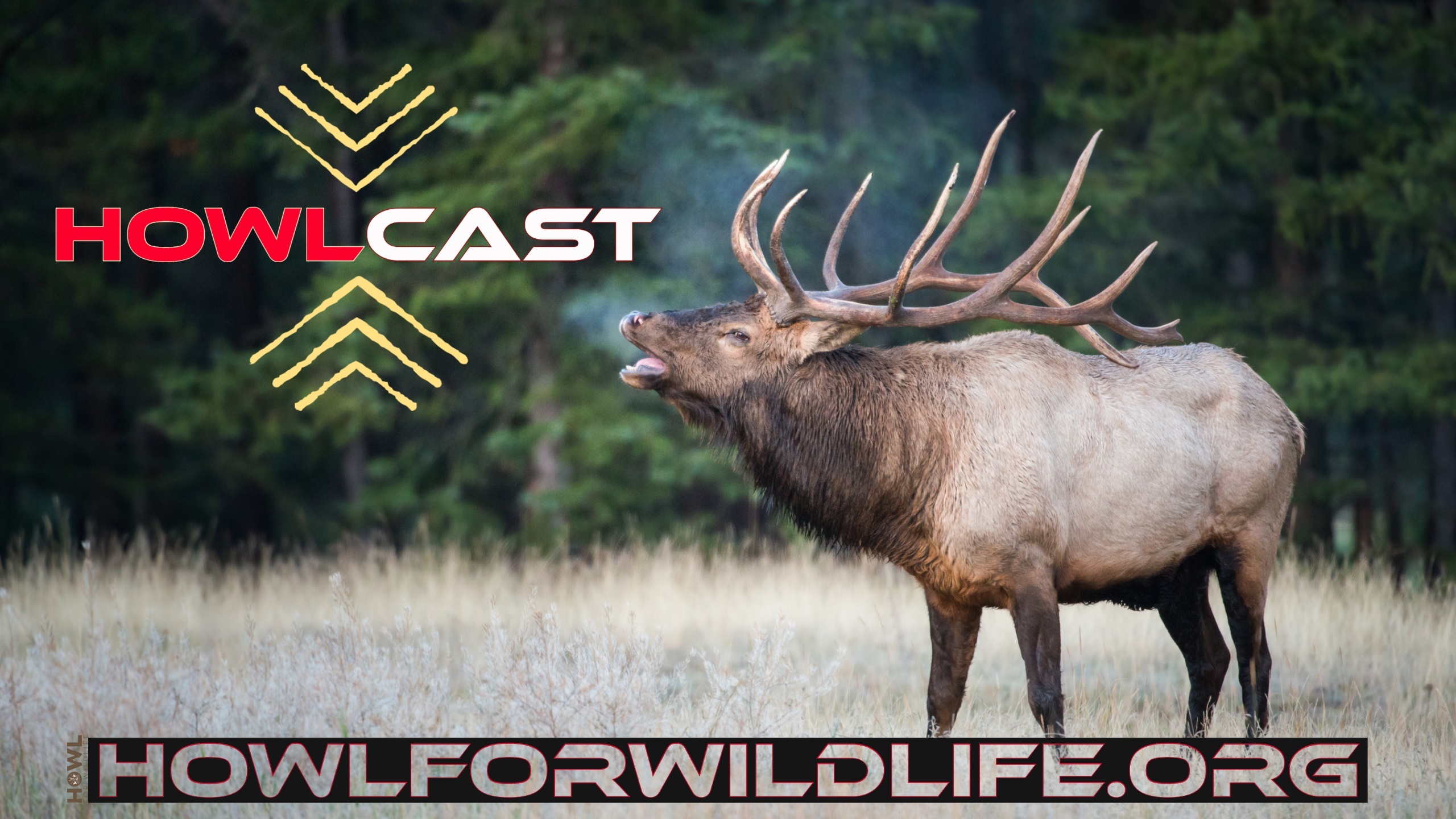
The Time is now
We can no longer sit idly by and hope for things to change. The time to invest, conserve, protect and restore our nation’s landscapes and wildlife is now. Hunters and anglers who appreciate and participate in outdoor activities must make a commitment to be active and not let it be destroyed or taken away. It is critical for ardent conservationists, hunters, anglers, and outdoor lovers to express their concerns to their elected officials about government actions that affect fish, animals, and their habitat.







